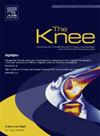ChatGPT-4.0和DeepSeek-R1尚未为膝关节骨关节炎提供临床支持的答案
IF 2
4区 医学
Q3 ORTHOPEDICS
引用次数: 0
摘要
ChatGPT-4.0和DeepSeek-R1等大型语言模型(llm)提供了先进的自然语言功能,但它们也引起了人们对医疗应用准确性的担忧。缺乏针对骨科指南的系统评估,特别是膝关节骨关节炎(KOA)。本研究评估了这些LLMs与最新中国KOA临床实践指南的准确性和一致性。方法对ChatGPT-4.0和DeepSeek-R1对17种指南推荐的KOA治疗策略进行查询。两名独立审稿人根据指南评估反应一致性(一致性、不一致性或无一致性)。评估者间信度采用Cohen’s kappa系数。采用卡方检验比较两种模型的反应模式。结果schatgpt -4.0的一致性为59%;DeepSeek-R1达到了71%。两种模型对臭氧治疗和关节镜检查的建议不一致。ChatGPT-4.0有5个不一致的回答;DeepSeek-R1有三个。评分间一致性高(κ = 0.90和0.86)。一致性率无显著差异(P = 0.7;P = 1)。只有DeepSeek-R1提供了参考文献(总共38个),但只有8个是完全可验证的。结论ChatGPT-4.0和DeepSeek-R1均未产生符合循证临床指南的反应。这些发现强调了临床医生和患者对当前人工智能平台产生的医疗建议进行谨慎解释的必要性。本文章由计算机程序翻译,如有差异,请以英文原文为准。
ChatGPT-4.0 and DeepSeek-R1 does not yet provide clinically supported answers for knee osteoarthritis
Background
Large Language Models (LLMs) such as ChatGPT-4.0 and DeepSeek-R1 provide advanced natural language capabilities, but they also raise concerns regarding accuracy in medical applications. There is a lack of systematic evaluation of their performance against orthopedic guidelines, particularly for knee osteoarthritis (KOA). This study assessed the accuracy and consistency of these LLMs in relation to the most recent Chinese clinical practice guidelines for KOA.
Methods
Queries regarding 17 guideline-recommended KOA therapeutic strategies were posed to ChatGPT-4.0 and DeepSeek-R1. Two independent reviewers evaluated response concordance (Concordance, Discordance, or No Concordance) with guidelines. Inter-rater reliability was assessed using Cohen’s kappa coefficient. A chi-square test was employed to compare the response patterns between the two models.
Results
ChatGPT-4.0 showed 59 % concordance; DeepSeek-R1 achieved 71 %. Both models gave inconsistent recommendations for ozone therapy and arthroscopy. ChatGPT-4.0 had five inconsistent responses; DeepSeek-R1 had three. Inter-rater agreement was high (κ = 0.90 and 0.86). No significant difference was found in concordance rates (P = 0.7; P = 1). Only DeepSeek-R1 provided references (38 in total), but just 8 were fully verifiable.
Conclusion
Neither ChatGPT-4.0 nor DeepSeek-R1 consistently produced responses aligned with evidence-based clinical guidelines. These findings highlight the need for cautious interpretation of medical advice generated by current AI platforms, both by clinicians and patients.
求助全文
通过发布文献求助,成功后即可免费获取论文全文。
去求助
来源期刊

Knee
医学-外科
CiteScore
3.80
自引率
5.30%
发文量
171
审稿时长
6 months
期刊介绍:
The Knee is an international journal publishing studies on the clinical treatment and fundamental biomechanical characteristics of this joint. The aim of the journal is to provide a vehicle relevant to surgeons, biomedical engineers, imaging specialists, materials scientists, rehabilitation personnel and all those with an interest in the knee.
The topics covered include, but are not limited to:
• Anatomy, physiology, morphology and biochemistry;
• Biomechanical studies;
• Advances in the development of prosthetic, orthotic and augmentation devices;
• Imaging and diagnostic techniques;
• Pathology;
• Trauma;
• Surgery;
• Rehabilitation.
 求助内容:
求助内容: 应助结果提醒方式:
应助结果提醒方式:


